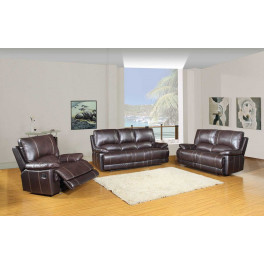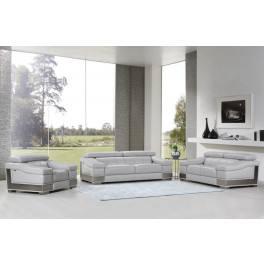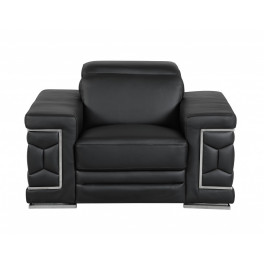Almost any room can be an interior design dream or a nightmare. Large rooms. High ceilings. Small rooms. Low ceilings. You can create beautiful home décor for any size space. You can only do it, however, if you keep in mind one important design concept: scale.
Scale, in interior design, is the way one element relates to the size of another element. In the case of room size, scale references the relationship between the furniture and design elements and the size of the room as a whole.
Getting scale right is essential when you design your room. No matter how beautiful your design elements might be, if they’re the wrong size for your space, they won’t work.
Here are seven tips for getting the scale right in your interior design.
1. Bigger Needs More
The bigger the room, the more furniture you need.

Photo by Breadmaker on Shutterstock
It’s important, however, to be sure you still have enough space around the furniture. The room above, although filled with furniture, doesn’t look crowded because there is enough open space to balance the furniture grouping.
A large room lacking furnishings will look like you’re just moving in or you ran out of money when you were designing the room.

Photo by Artazum on Shutterstock
As you can see from the photo above, a large room that is out of balance with the amount of furniture also looks cold and uninviting.
2. Higher Needs Taller
High-ceiling rooms need taller furniture or architectural elements like fireplace surrounds.

Photo by Breadmaker on Shutterstock
Although the furniture in the above room isn’t tall, the fireplace stone and the TV-cutout have height. Also, the placement of large accessories above the TV turned the cutout into something equivalent to a tall furniture piece.
You can also balance scale in a room with high ceilings by using ceiling beams. If your furniture is low, bringing the ceiling down (not literally, of course) with dropped beams will create the proper relationship between high ceilings and lower furniture.

Photo by Breadmaker on Shutterstock
Both the room above and the one before it are cozy and beautiful.
A tall-ceilinged room with low furniture, in contrast, is cavernous and unattractive.

Photo by yampi on Shutterstock
In the photo above, the eye is drawn to all the bare white space instead of to a blend of the room’s architecture and furnishings. The white space is so dominant, in fact, that you almost miss the stunning window design.
3. Accessory Size and Number Must Fit
As with furniture, accessories also must play well with the size of the room. Larger rooms with or without high ceilings need more than just enough furniture and the right size furniture. They also need a corresponding number of accessories.

Photo by Photographee.eu on Shutterstock
The size of the accessories themselves also must match the size of the room. In the room above, the boldly patterned rug, the plant in the tall stand, the pouf, and the taller shelves filled with storage containers fit well in the room. If the whole room had been accessorized with smaller objects like the candles and small ball lamp hanging over the plant, the room would have lost its balance and crashed into clutter.
You can’t get a strong design impact like the one above if you leave a large room nearly free of accessories.

Photo by PinkyWinky on Shutterstock
A room like the one above looks like the set for an exercise video, not a space you want to curl up and cuddle in.
In smaller rooms, too many accessories or accessories that are too large will overweigh the room.

Photo by JR-stock on Shutterstock
The number of pillows on the sofa and the larger size of most of the items on the shelves above don’t match the size of the room. Smaller accessories and just a couple pillows would put the room back in balance.
4. Textiles Belong with Tall and Big
Heavy textiles are strong partners for a large room with tall ceilings. A thick rug and heavy curtains can “fill up” a space without overcrowding it.

Photo by pics721 on Shutterstock
Too many textiles in a small room, on the other hand, end up sucking space out of the space. It’s like using a heavy blanket on a hot day: the effect is smothering.

Photo by JR-stock on Shutterstock
5. More Colors and Patterns Need More Space
The more colors and/or patterns you use in a room, the larger the room needs to be. Lots of color in a small space will overpower the room size and pull the room in on itself, leaving it feeling like its being choked by a tight drawstring.

Photo by alexandre zveiger on Shutterstock
In the room above, you get the sense that you couldn’t move without tripping over a pattern or color.
A simple color palette with just two or three coordinated patterns creates better equilibrium in limited space.

Photo by Breadmaker on Shutterstock
Strong colors work well, however, if your room is large.

Photo by Breadmaker on Shutterstock
6. Small Rooms Don’t Want Stuffing
Too much is too much in a small room. Filling a tiny space with furniture and accessories will make such an uneven room that it will end up looking like a storage room or retail store.

Photo by baranq on Shuttersttock
If you want a small space that’s livable and relaxing, use just a few modestly-sized furnishings.

Photo by Image Supply on Shutterstock
In the photo above, you can see that leaving the walls bare can help balance a small space as well. This is especially true if the room has multiple windows, as above.
7. Big Art, Big Space
Speaking of bare walls, art must match its home on the walls as well. Large walls require a large art piece.

Photo by Elena Elisseeva on Shutterstock
Or you can group smaller art pieces together to harmonize with the big wall space.

Photo by XtravaganT on Adobe Stock
Big art can overwhelm a small room...

Photo by Photographee.eu on Shutterstock
... And small art gets lost in a large room.

Photo by Luisa Leal Photography on Shutterstock
The bottom line, when it comes to interior design scale, is pretty clear: big likes big and bold, and small likes small and simple. That’s oversimplifying it, obviously, but keeping that overriding rule in mind and applying the above guidelines will help you match your interior design ideas to the space you have to work with.
You can play with scale and get a feel for what balances with what in House Tipster’s room planner.

























